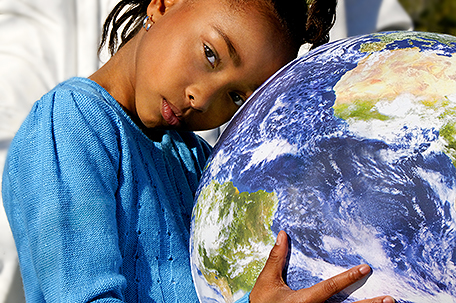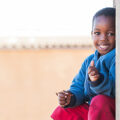
21.8 percent of children poor – including over one-third of Black and Hispanic Children
black politics on the web
U.S. Census Bureau data reveals that there are 46.5 million poor people in America in 2012, including 16.1 million children, this essentially unchanged from 2011. Children remain the poorest age group in the country with a poverty rate 21 percent higher than before the Great Recession. There are 2.75 million more children living in poverty today than there were in 2007 at a time when large corporations are experiencing record high profits and the wealthiest Americans’ net worth has increased, poor children have not had any relief.
“It is disgraceful that more than one out of five children are poor in our rich nation. Income inequality was higher in 2012 than any time in the last hundred years in the United States, and it is children who suffer the most. The Children’s Defense Fund is celebrating its 40th Anniversary this year and I had hoped we would have put ourselves out of business by now. Although critical gains have been made in building a safety net for children, our challenge to ensure every child a level playing field is greater than ever with more than 16 million children, nearly five million under age five living in poverty and families still struggling to recover from the recession,” said Marian Wright Edelman, president of the Children’s Defense Fund.
The Great Recession thrust millions of children and families into poverty—many in extreme poverty—jeopardizing the promise of a productive future for children and our nation. And the younger children are the poorer they are. 25.1 percent of children under age 5, the years of greatest brain development were poor in 2012. Poverty stacks the odds against children. Research shows children growing up poor are less likely to succeed in school, to grow up healthy and more likely to be poor as adults.
With record numbers of families living in poverty, the Supplemental Nutrition Assistance Program (SNAP) is a lifeline for millions of children and families. Almost half of SNAP recipients are children. Census Bureau data show SNAP lifted 4 million Americans out of poverty in 2012.
“Despite its proven success, SNAP remains a consistent target at budget-cutting time. It is incomprehensible and morally indefensible that this week the House of Representatives will vote on a bill that would seriously harm many receiving SNAP while they protect subsides for rich farmers,” said Edelman. “This is just one of a recent series of efforts on Capitol Hill to shred the safety net poor children and families desperately need to survive and thrive. 57,000 children have been cut from Head Start and Early Head Start from the mindless sequester. Ensuring children’s health and wellbeing is a test not only of our morality but of our common and economic sense. We need to create jobs, jobs, jobs and jobs that pay enough to lift people from poverty. When will enough of our leaders get it?”
Census Bureau data shows:
• Children are the poorest age group in America and the younger they are, the more likely they are to be poor; 21.8 percent of children live in poverty and 25.1 percent of children under five.
• More than one in five children—16.1 million—were poor in 2012; nearly five million (4.95 million) were under five. Almost 1 in 10 children (9.7 percent) live in extreme poverty.
• Poverty is defined as an annual income below $23,492 for the average family of four—$1,958 a month, $452 a week, or $64 a day. Extreme poverty is an annual family income less than half of the poverty level – $11,746 a year, $979 a month, $226 a week, or $32 a day for the average family of four.
• Children of color are disproportionately poor. 37.9 percent of Black children and 33.8 percent of Hispanic children are poor while 12.3 percent of White, non-Hispanic children, are poor.
• Hispanic children are the largest group of poor children (5.98 million), White non-Hispanic children the second largest (4.78 million), and Black children the third largest (4.20 million).
• 42.5 percent of Black children under age five—1.27 million—are poor; nearly one in four are extremely poor (23.0 percent).
Nearly two out of three (65.9 percent) poor families with children under 18 have at least one worker.
















Leave a Comment